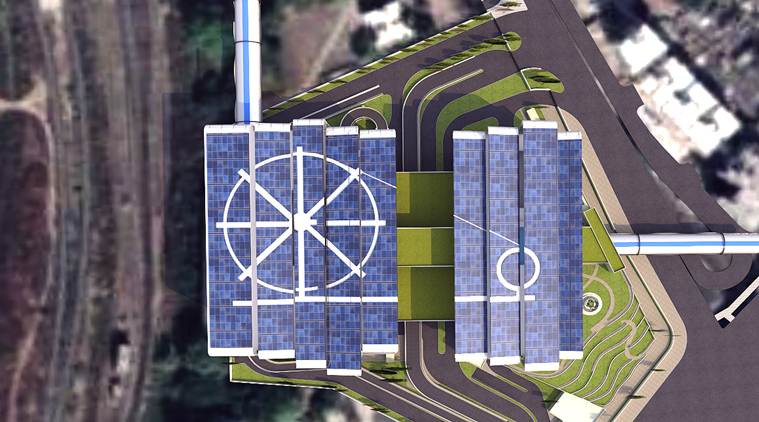The Ahmedabad-Mumbai high-speed rail project is going solar, with ‘Grid Connected Rooftop Solar Projects’ planned for various stations, beginning with the Sabarmati rail terminal.
The proposed structure at Sabarmati station will include solar panels on the station’s roof with a proposed ‘Charkha’ symbol, as well as solar panels on the building’s side with the iconic symbol of Mahatma Gandhi and his followers’ 1930 Salt March.

Sabarmati was one of Gandhi’s abodes, and the high-speed rail corridor will begin there, with a rail terminal. A 700 kWp (kilowatts peak) grid-connected plant is planned.
On Thursday, the National High Speed Rail Corporation (NHSRCL) issued a tender for a solar project at Sabarmati station, stating that the project would be awarded under the RESCO model for a 25-year period.
“The solar power generated can be used for captive applications, and the surplus power can be fed to the grid or not.” “To the extent possible, NHSRCL aims to reduce fossil fuel-based electricity and make buildings self-sustainable from the point of electricity consumption,” the tender document states.
The project must be at least 700 kWp in size and will be grid-connected. The document states, “The bidder may propose plant with higher capacity considering the panels with higher output.”
The Indian Railways is also working to install rooftop solar panels at railway stations across the country in order to become carbon-neutral by 2030.
Last year, the government told Parliament that it had installed 95.67 MW of rooftop solar systems and awarded 248.46 MW of solar capacity at 835 railway stations across the country. This is part of India’s plan to reduce greenhouse gas emissions and meet its renewable energy targets, as pledged at international climate conferences.



